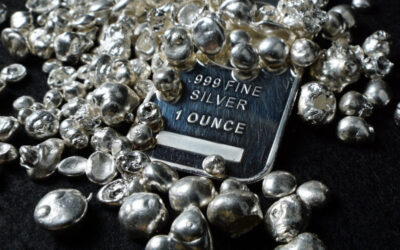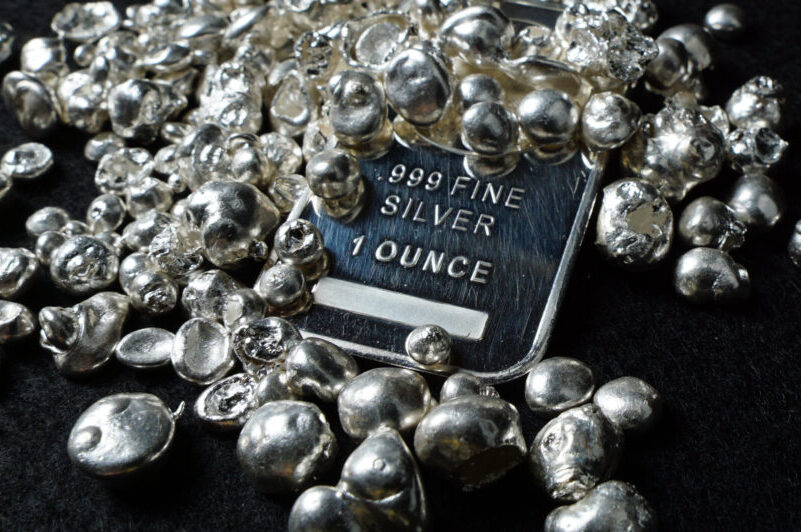Precious Metals

Silver Prices Hit Record High as Demand Surges and Supplies Tighten
Silver prices have soared to their highest level in 45 years, reaching around $50 a troy ounce. This sharp rise comes decades after the infamous Hunt brothers’ attempt to corner the silver market in 1980—a moment that still echoes through the world of commodities trading. The rally marks a dramatic milestone for the precious metal, fueled by a combination of tight supply, rising industrial demand, and investor anxiety over inflation and global instability. A Record Nearly Half a Century in the Making Silver futures climbed more than 5% on Monday, breaking the long-standing record closing price of $48.70 set in January 1980. That earlier surge ended in disaster when the Hunt brothers’ speculative scheme collapsed, triggering market chaos and inspiring the classic comedy Trading Places. While silver has finally broken its nominal record, the metal would have to trade above $200 a troy ounce to beat that 1980 high after adjusting for inflation. Even so, this new rally underscores just how powerful the current appetite for silver has become. (MORE NEWS: Trump Orders Military Pay Amid Government Shutdown) A Market on Fire Silver’s 72% rise in 2025 has made it one of the year’s top-performing assets. It has outpaced gold’s 55% surge above $4,000 an ounce and even topped the Nasdaq’s 15% gain. Investors see both silver and gold as safe havens in a world of expensive stocks, volatile interest rates, and persistent geopolitical tensions. The frenzy is also tied to the booming industries driving modern technology. Silver plays a crucial role in the production of electric vehicles, solar panels, and electronics. As artificial intelligence and renewable energy expand, demand for the metal continues to grow. London Prices Surge Amid Shortages Normally, the silver markets in London and New York move together. But recently, prices in London have surged far above those in the U.S. Traders there have been scrambling to restock dwindling inventories, pushing up prices even more. Earlier this year, traders shipped large quantities of silver from London to the United States to get ahead of potential tariffs. Now, with U.K. supplies running low, that flow could soon reverse. The scramble for physical silver has only deepened the imbalance between supply and demand. The Growing Supply Crunch According to Shree Kargutkar of Sprott Asset Management, the world simply isn’t producing enough silver to meet demand. “Silver is in a fundamental deficit with demand outstripping supply,” he explained. That shortfall has created one of the clearest examples of a supply-demand imbalance in today’s markets. “Silver is in a fundamental deficit with demand outstripping supply,” Sprott Asset Management senior portfolio manager Shree Kargutkar told Yahoo Finance. “This development is being picked up by investors who are adding to their holdings through ETFs as well as physical silver.”… — Sprott Asset Management (@sprott) October 1, 2025 The situation has worsened because warehouses around the world are stockpiling silver in anticipation of possible U.S. tariffs. The U.S. Geological Survey recently proposed adding silver to its Critical Minerals List, which could classify it as essential to national security. Such a move would expose silver to new trade restrictions—another reason buyers are hoarding supplies. Solar Panels Drive New Demand Silver’s biggest source of growth now comes from the clean energy sector. Over the past decade, solar-panel manufacturers have more than doubled their silver use. Analysts at Citigroup believe real consumption could be even higher than reported, particularly in China, where installations are undercounted. The bank recently raised its price target for silver to $55 a troy ounce, citing inflation risks, tariffs, and rising geopolitical tensions as ongoing catalysts. As gold’s price soars past $4,000 an ounce, many investors and jewelry buyers are turning to silver as a more affordable alternative. (MORE NEWS: Tesla Launches Cheaper Model Y and Model 3 to Boost Sales) Investors Flock to Silver Funds The surge in investor demand is also evident in the flood of money pouring into exchange-traded funds (ETFs) backed by silver. These funds buy and store physical silver, and their rising popularity has pulled even more metal out of the market. Because silver’s overall market size is smaller than gold’s, these inflows have an outsized impact on prices. The result has been a scramble among traders to secure supplies. Interest rates for borrowing silver in London have shot up as dealers race to cover positions. This unusual activity suggests that some hedge funds and banks have suffered losses on trades that depended on more stable price relationships between London and New York. Lessons from History The 1980 silver crash remains a cautionary tale. The Hunt brothers—Bunker, Herbert, and Lamar—accumulated massive stockpiles of silver in the 1970s, betting on inflation. When they borrowed heavily to buy even more through futures contracts, prices skyrocketed from about $11 to nearly $50 an ounce. Ordinary Americans began selling their silverware and coins, flooding the market with supply. Regulators intervened, the bubble burst, and prices plummeted. Today’s surge is driven by different forces: industrial demand, geopolitical risk, and the green energy boom. But the lesson remains—when speculation and scarcity collide, markets can move with incredible speed, both up and down. Outlook: A Precious Metal in the Spotlight Analysts say silver’s outlook remains bright, at least in the near term. As long as inflation fears, tariffs, and energy transition trends persist, demand will likely stay strong. Investors searching for safety and growth are turning to silver as both a hedge and a bet on the future of technology. Still, history suggests caution. The same forces that lift silver to record highs can also lead to sharp corrections. Whether this rally becomes another legendary boom—or another cautionary bust—depends on how quickly supply catches up with the world’s growing appetite for this shining metal. Disclaimer: This article does not provide financial advice. It is intended strictly for educational purposes. Readers should consult a trusted financial advisor before making any investment decisions. Forget the narrative. Reject the script. Share what matters. At The Modern Memo, we call it like it is — no filter, no apology,…

